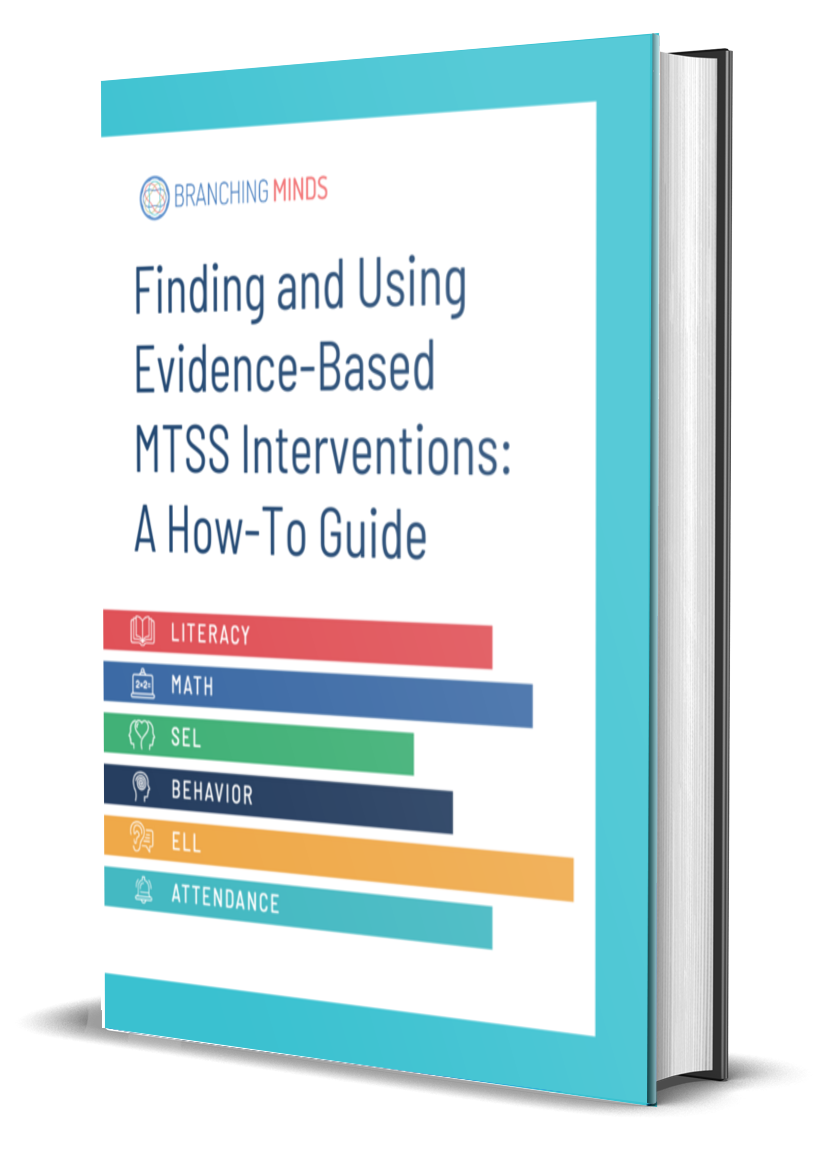Guide
Finding and Using Evidence-Based MTSS Interventions: A How-To Guide
Evidence-based interventions are essential to a strong MTSS. Yet when a student needs extra help, it can be hard to know which intervention to choose and how to implement it with fidelity.
This guide highlights 15 interventions from the Branching Minds Library across literacy, math, SEL, behavior, attendance, and English Language Learners (ELLs). Every intervention is curated by our Learning Science team from trusted sources like What Works Clearinghouse, Evidence for ESSA, Intervention Central, Harmony SEL, and the Florida Center for Reading Research, and categorized by ESSA tiers of evidence.
Download the guide.













